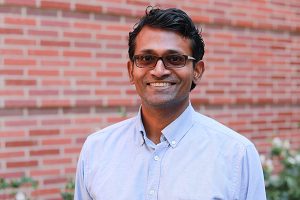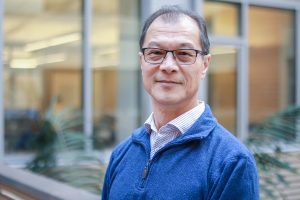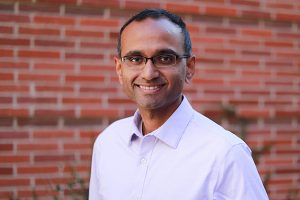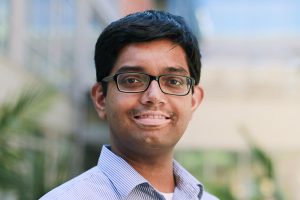Research Opportunities
Here are some current undergraduate research lab openings and an overview of the research each lab conducts. For more information, please reach out to the specified contact.

Dunn Lab
Contact: bdunn@ucla.edu
Website: https://sites.google.com/g.ucla.edu/dunn-lab/home
Research in the Dunn group involves the synthesis of inorganic and hybrid materials and characterization of their electrical and optical properties. One of the principal themes which extends to most of the research activities is the use of sol-gel methods to synthesize a number of the materials studied in the group. This synthetic approach enables the preparation of materials that incorporate a wide variety of organic and biological dopants and are capable of developing unique microstructures and properties.
This remote research opportunity has to do with analyzing optical images and will be taken as MSE 99. Please contact Dr. Dunn once fall quarter instruction begins.

In situ Microscopy Lab
Contact: kodambaka@ucla.edu
Website: http://kodambaka.bol.ucla.edu
Our group focuses on the science underlying the synthesis and stability of advanced materials for applications in the areas of aerospace, catalysis, energy storage, and optoelectronics industries. We aim to develop detailed atomic-level understanding of the mass transport mechanisms, chemical reaction kinetics, and material thermodynamics controlling morphological, compositional, and structural evolution of materials. We use a variety of in situ (as well as ex situ) characterization tools such as variable-temperature scanning probe microscopy (STM/AFM), low-energy electron microscopy (LEEM), scanning/transmission electron microscopy (SEM/TEM), and X-ray diffraction (XRD) to investigate the kinetics of nucleation, growth, and thermochemical and mechanical stabilities of nanostructures.
Please contact Professor Kodambaka for more information.

Xie Research Group
Contact: yhx@seas.ucla.edu
Website: http://www.seas.ucla.edu/smrl/index.html
The Xie Research Group focuses on epitaxy of semiconductor nano-structures for achieving novel electronic and optoelectronic properties.
This research opportunity involves using machine learning algorithms to identify patterns in the spectra of surface enhanced Raman spectroscopy from biological or patient samples for cancer detection or Covid-19 detection. This will be best suited for people with statistics and software backgrounds.

Raman Lab
Contact: aaswath@ucla.edu
Website: http://www.aaswathraman.com
Dr. Raman’s research explores how light and heat can be controlled at the nanoscale to enable new technological possibilities for cleaner energy, information processing, sensing, displays and communication systems. His research group’s interdisciplinary interests include metamaterials, nanophotonics, photonic materials, plasmonics and new computational and machine learning methods. A highlight of his recent work has been initiating an emerging field of research, and a new approach to energy efficiency and generation, known as radiative cooling. Using nanoscale photonic materials, his research has explored how to harness a ubiquitous and renewable source of energy that remains largely unexploited: the cold of the universe.

Hybrid & Multi-Phase Materials Laboratory
Contact: jyang@seas.ucla.edu
Jenn Ming Yang’s research is primarily focused on investigating the fundamental problems related to processing, microstructure and behavior of high-temperature composites for advanced aerospace structural and ground transportation applications. Their efforts go toward creating a science base in quantitative relations between the microstructural parameters and macroscopic mechanical response of high temperature composites. Experimental and theoretical work is conducted to study the significant issues on mechanisms and mechanics of deformation and fracture of high temperature composites.

Archaeomaterials Group
Contact: kakoulli@ucla.edu
Website: https://archaeomaterialsgroup.wordpress.com
The Archaeomaterials Group’s research focuses on: 1) archaeometry and conservation science; 2) forensics and criminalistics in art and archaeology, through the application of basic and fundamental scientific principles and advanced/innovative technologies, and 3) development of novel materials based on archaeomimetism and archaeoinspiration. This research opportunity will involve the study of ancient materials (most likely a ceramic or frit material) through reverse engineering processing. It will involve analyzing/processing data from SEM-EDS, XRF, and perhaps FORS (Fiber Optics Reflectance Spectroscopy).

Ab Initio Simulations Lab @ UCLA
Contact: asbanerjee@g.ucla.edu
Website: https://www.amartyabanerjee.com
I am interested in the development and usage of mathematical and computational tools for the characterization and informed discovery of novel materials and structures, with a particular focus on first principles (i.e., quantum mechanical) methods. I have been working on extending the scope and capabilities of such methods, for applications to problems in mechanics (such as the modeling of defects), and energy storage / conversion technologies. My other research interests include the analysis and development of multiscale methods; the usage of symmetry principles in various areas of science and engineering (including problems related to materials discovery, molecular self-assembly, wave-propagation, and the design of computational solvers); as well as numerical analysis and scientific computation.

Electronic Materials Group
Contact: goorsky@seas.ucla.edu
Website: http://www.seas.ucla.edu/~goorsky
The following opportunities will be remote but with the idea that students would have the opportunity to continue this work, synthesize their own samples, and take their own measurements as soon as the on-campus restrictions are lifted.
"Leveraging a New Theoretical Paradigm to Enhance Interfacial Thermal Transport In Wide Bandgap Power Electronics" This is part of a multi-university research program into material such as gallium nitride, aluminum nitride, diamond, and gallium oxide. The performance of devices based on wide bandgap materials is limited because, at the high currents and voltages that these devices operate, heat is generated in the devices and must be more effectively dissipated. This program aims to better understand thermal transport across such interfaces and to use this science to produce higher performance devices.
Opportunities include:
Integrating diamond (best thermal conductivity of any element) with other materials by deposition and bonding: electron microscopy and x-ray scattering data analysis of interfaces at the nanoscale.
Si-Ge structures: assessment of the interface at silicon and germanium including the roles of dislocation formation and interdiffusion
Sapphire - aluminum interfaces: more deeply explore electron microscopy images to determine how the interface between sapphire and aluminum is constructed and what impact that has on transport across that interface
GaN epitaxy and ion implantation for high power devices. As much as 80% of electricity could pass through power electronics between generation and consumption by 2030. In contrast, just 30% of electrical energy passed through power electronics converters in 2005. Technical advances in power electronics promise enormous energy efficiency gains throughout the United States economy. Achieving high power conversion efficiency in these systems, however, requires low-loss power semiconductor switches. Today’s dominant power semiconductor switch technology is silicon based, which becomes much less efficient as power demands are increased. Power converters based on GaN stand to overcome these inherent inefficiencies by enabling higher voltage devices with drastically improved efficiency—while also dramatically reducing size and weight.
Opportunities include:
Understanding the epitaxial growth of GaN by MOVPE using data from atomic force microscopy, x-ray diffraction, and electron microscopy. Opportunities include using existing data to map out changes in epitaxial growth morphology at different locations on the wafer and to determine how the growth is impacted by substrate defects, growth morphologies, etc.
Studying ion implantation and annealing of GaN using novel annealing techniques to produce p-n junctions that operate at high temperatures.
Epitaxial oxides for novel magnetic-electrronic interactions, superconductivity, thermoelectric behavior, and plasmonics. Thin films of SrRuO3 have drawn wide applied interest as a conducting layer in epitaxial multilayered structures of complex oxides, in particular, as electrodes in oxide electronics. In addition, the compound’s resistance to many chemical solutions (up to temperatures as high as 1200 K) has proved beneficial in device processing.
Opportunities include:
Collaboration to provide x-ray diffraction, x-ray reflectivity, atomic force microscopy, and other characterization techniques to study epitaxial growth of SrRuO3 and SrTiO3 on silicon.



